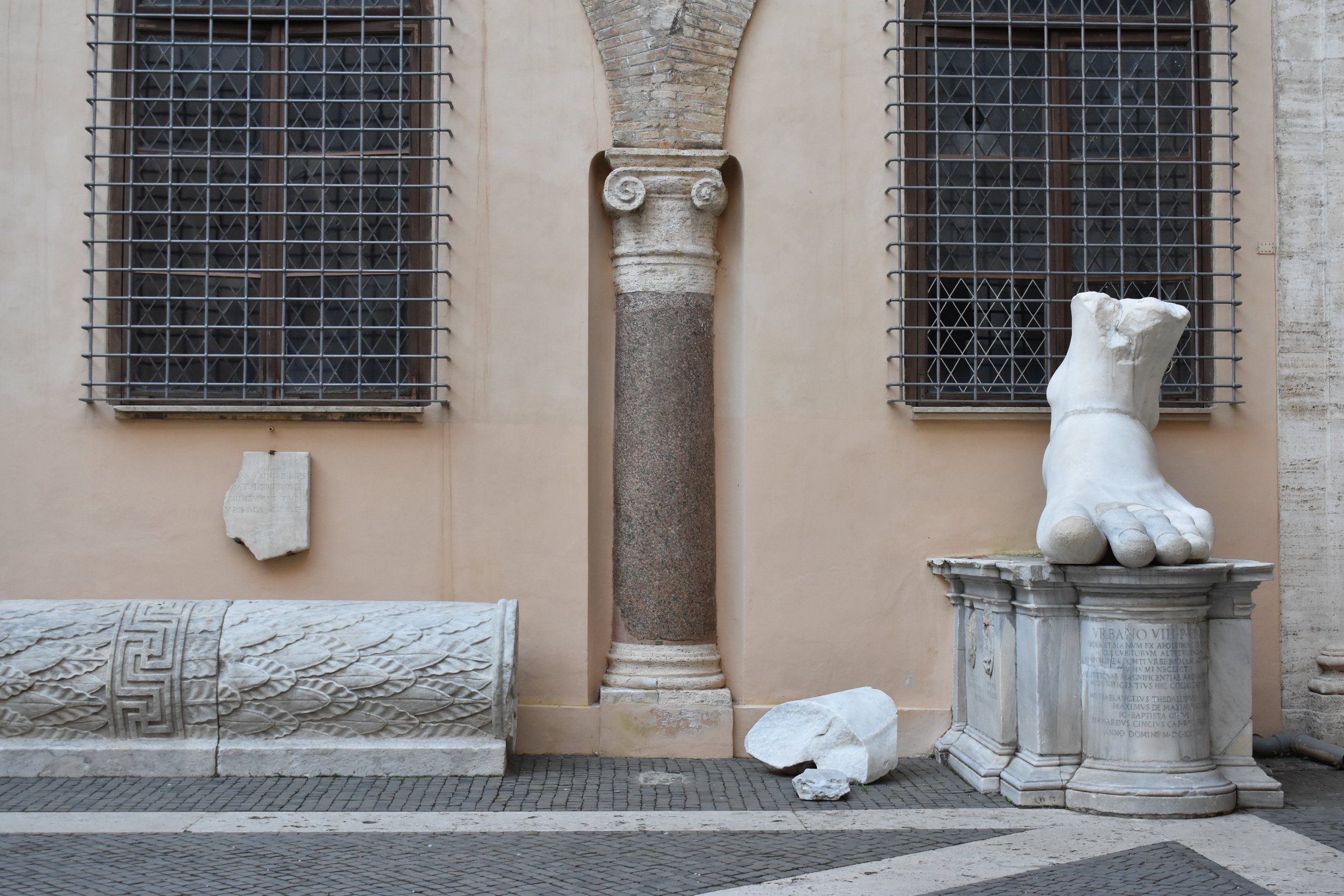Travel With Me: Rome, Italy (Day Four)
If you missed any previous installments of my travels in Rome (including the Colosseum, Vatican Museums, or Pompeii), go here or click through the previous posts! Thanks for reading!
Day Four: Aventine Hill & Capitoline Museums
Unfortunately, I was struck down with a horrifically sore throat on day three of the trip, and after staying up until 2 a.m. on New Year’s Eve, by day four, I was suffering with a full-blown cold. Nevertheless, after sleeping in (a little bit), we still tried to stick to the itinerary, though allowed for a less jam-packed day of sightseeing.
Aventino Hill
Aventine (or Aventino in Italian) Hill is one of the Seven Hills of Rome—and if you read my previous blog post about Palatine Hill, you’ll know this is the hill Remus chose on which to settle Rome, while Romulus chose Palatine.
Now, if you climb up to Aventino Hill, you’ll find a park with a beautiful panoramic view of the city. On a neighboring road, there are beautiful churches, including the Basilica of Santa Maria, the oldest Roman Basilica built in Rome. The area is rather quiet for Rome; however, the major tourist attraction is a keyhole in a big green door in the Piazza dei Cavalieri di Malta. What used to be (and definitely isn’t now) an insider’s gem is now the spot on Aventino Hill where the tourists flock. We waited in line for about 30ish minutes (which I wouldn’t have done if we’d had a busy schedule that day) for a picture of St. Peter’s framed by the shrubbery. (A photo you probably won’t love unless you have a camera with a telephoto lens.) It was cool to see, but it wasn’t life-changing. My verdict: skip it, especially if the line is long.
Speaking of long lines, on the walk from Aventino Hill back towards the city center, you’ll pass the Mouth of Truth, or the Bocca della Verità. Another tourist attraction with an absurdly long line, the Mouth of Truth is a marble disk probably depicting the sea god Oceanus. Historians believe its original purpose was possibly as a drain cover in the Temple of Hercules Victor, but during the Middle Ages, a belief circulated that the mask would bite off the hand of liars, a superstition that has persisted to this day.
While the legend surrounding this mask is interesting, I don’t see the point in waiting for an hour to take a picture with my hand in its mouth. Since the mask is kept on the portico of a church, it is very easy to snap a picture outside and forgo the line altogether.
Musei Capitolini
In our original plans, Ryan and I were going to go to the Borghese Gallery; however, it requires booking months in advance (and you have to visit during a specific time slot they give you), and neither of us had time to plan that intensely ahead due to being in graduate school. Instead, we settled on the Capitoline Museums being our paid museum experience in Rome.
The museum is part of a trapezoidal piazza designed by Michelangelo, dominated by the Palazzo dei Conservatori, the Palazzo Nuovo, the Palazzo Senatorio, and a large statue of Emperor Marcus Aurelius. The museum is the oldest public collection of art in the world, originating in 1471 when Pope Sixtus IV donated a collection of bronze statues to the people of Rome and located them on Capitoline Hill. Since then, the museums' collection has grown to include a large number of ancient Roman statues, inscriptions, and other artifacts, as well as a collection of medieval and Renaissance art.
After strolling through the museum for few hours, Ryan and I called it an early night, so sick-me would be able to muster up enough energy for our last day in Rome!
Thanks for reading! If you liked this post, don’t forget to hit the heart button below!























